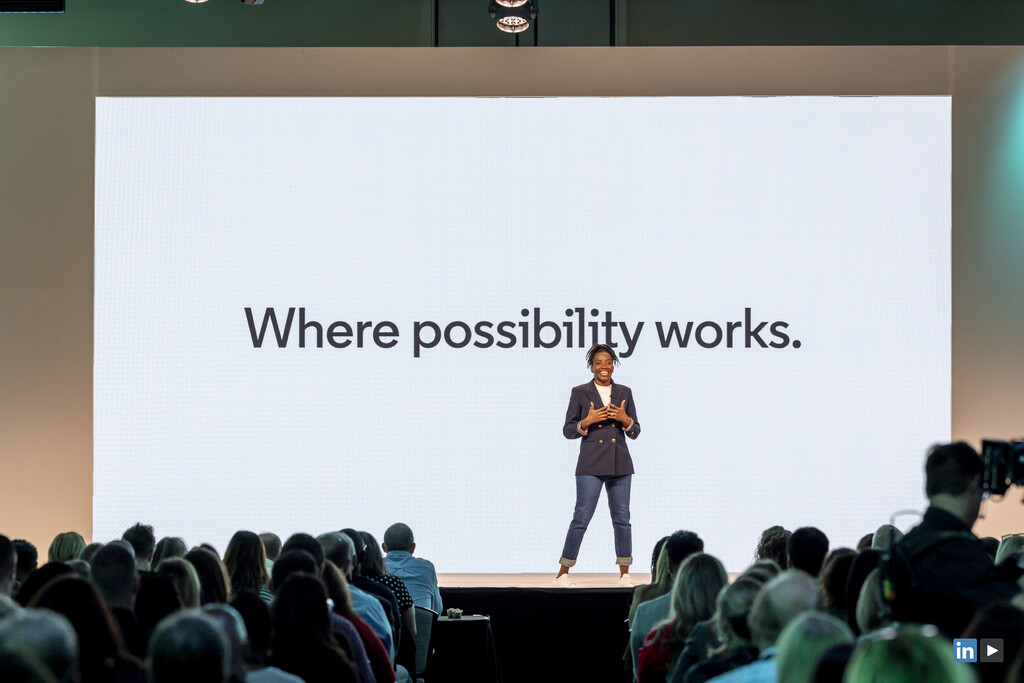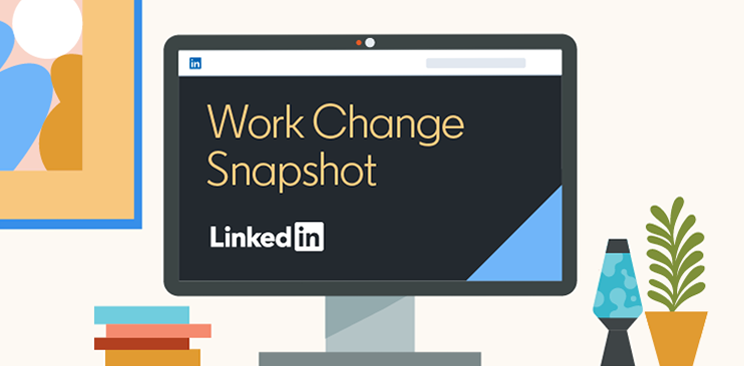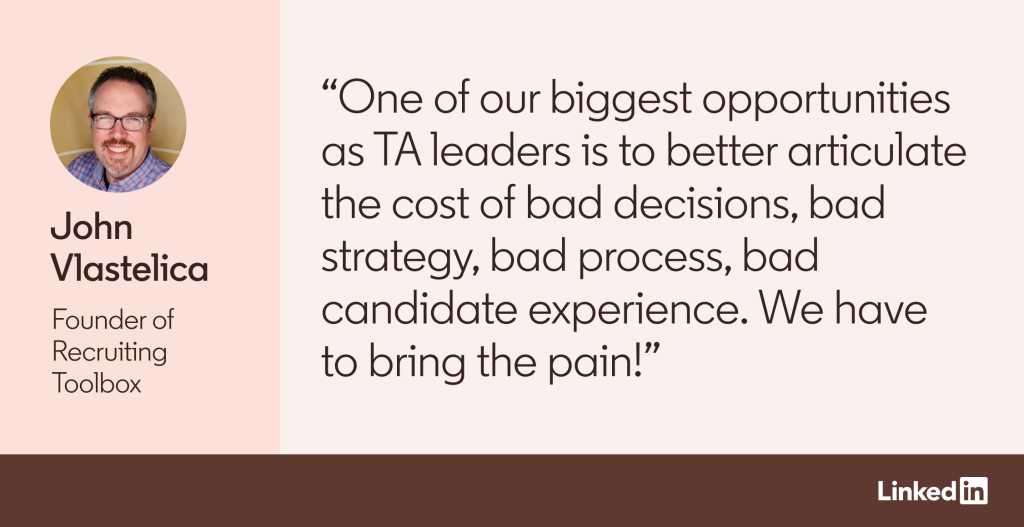1. Communication
Communication tops the LinkedIn list of Most In-Demand Skills for 2024 and will remain an essential skill for the foreseeable future. Effective communication from team and company leadership helps connect, motivate, and inspire employees. LinkedIn data also reveals that individual workers with strong communication skills get promoted 11% faster than those without this vital skill.
There’s a lot of talk about AI prompt engineering as the new “it” skill. But whether you’re working with AI or a colleague, effective communication will help you build relationships, collaborate, and drive results.
And when you’re communicating with AI, one way to improve the outputs is to communicate with as much intention as you would a colleague — give AI context and suggestions and ask it to try again if you don’t like the first output. And be polite (another critical human skill). While generative AI tools bring new efficiencies to written work and offer guidance to handle intrapersonal conflicts, truly expert communication requires nuance and balancing AI output with emotional intelligence and contextual knowledge. Invest time in helping your employees become effective communicators and they will help drive business results.
As Vanessa Van Edwards, a best-selling author and speaker on interpersonal skills, says in her LinkedIn Learning course Amplify Your Communication Skills with Gen AI: “It’s key to provide additional information to these tools to help get personalized, usable, and ultimately more human outputs that use your personal tone, style, and unique voice.”
Explore business writing, mindful dialogue, and interpersonal communication in the Building Communication Skills in the Age of AI learning path.
2. Critical thinking
Critical thinkers stand out in today’s shifting world of work. They’re able to engage with big ideas, question assumptions, and synthesize new information to make informed judgments in ways that AI cannot. As people start to use AI at scale for more tasks, our ability to think critically will help us navigate ambiguity and solve problems.
In her course Amplify Your Critical Thinking with Generative AI, Becki Saltzman, an international speaker, author, and trainer who helps leaders and their teams cultivate curiosity and critical thinking, calls critical thinking a “truth filter” — a necessary skill to question AI-generated information for reliability, relevance, and validity.
“Gen AI can suggest seemingly brilliant strategic and creative ideas, Becki says, “but it’s your job to make sure they’re not built on a shaky foundation of assumptions and unverified data.”
Whether you’re questioning the reliability and bias of AI-generated information or working with your team to develop strategies for the business or individual career growth, your ability to examine, interpret, and reflect will set you apart.
Explore problem solving, understanding biases, and integrating generative AI into critical thinking in the Building Critical Thinking Skills in the Age of AI learning path.
3. Creativity and innovation
There’s a strong case for championing creativity in the age of AI. As we turn to AI to handle repetitive, time-consuming tasks, we free ourselves up to focus on more creative endeavors. And once we’re in that creative space, we shouldn’t be afraid to tap AI assistive tools as collaborators. AI doesn’t replace our creativity so much as it enhances it.
Those who have spent time working with generative AI know that the output is only as good as the creativity and innovative ideas you bring to the collaboration. Leveraging your creativity and innovation alongside AI assistive tools will help you generate great work.
There’s magic that happens “when human creativity meets AI ingenuity,” says Dave Birss, international speaker, author, and educator at the intersection of AI and creativity, in his course Integrating Generative AI into the Creative Process. “AI is here to augment your creativity,” Dave says, “allowing you to reach for ideas you never previously considered.”
Employees around the world are catching on. Microsoft’s 2024 Work Trend Index report notes that 85% of users say AI helps them be more creative.
Sharpen your innovation skills and develop your creativity in the Building Creativity and Innovation Skills in the Age of AI learning path.
4. Emotional intelligence
Emotional intelligence is the ability to understand others and perceive social dynamics in ways that machines cannot. It is a critical element to build connection and trust between teammates.
“Humans are really good at making inferences about the information we absorb,” says technology journalist and analyst Chris Shipley, who consults on human and organizational challenges in the face of technological disruption, in her course Leveraging the Power of Social Intelligence in the Age of AI. “Your senses,” she explains, “provide vital context in the workplace, context that is rarely visible to AI and automation tools.”
Those who see human potential as limited to IQ may fear AI’s impact on work. But once we recognize the vast, untapped potential for emotional intelligence (EQ, or emotional quotient), it becomes clear that employees and leaders will play a vital — and essential — role in navigating AI.
Hone your relationship-building skills and increase your emotional awareness in the Building Emotional Intelligence Skills in the Age of AI learning path.
5. Adaptability
Generative AI is shifting job skill requirements at a remarkable pace and scale. LinkedIn data shows that over the last eight years, 25 percent of the skills required to perform jobs have changed; by 2030, skills needed to do your job will have changed by 68 percent. So, that means: Even if you are not changing jobs, your job is changing on you.
Change is the new constant, and adaptability is the new must-have skill that will help your people and your organization get ahead. The ability to respond to disruption and ambiguity with flexibility, resilience, and a growth mindset will help employees manage through uncertainty.
“An adaptive mindset prevents the paralysis of fear and uncertainty and instead puts you on a path to learning, growth, and opportunity,” says Chris Shipley in her course Building an Adaptability Mindset in the Age of AI. She says it’s also a way to stand out as a more valuable employee and make your career more resilient.
It’s no wonder adaptability was named the “skill of the moment” on the 2024 LinkedIn Most In-Demand Skills list. We can’t predict the future, but we can prepare for the big waves of change coming by learning to be more adaptable.
Explore resilience, mental agility, and how to embrace a growth mindset in the Building Adaptability in the Age of AI learning path.
6. Decision-making
So much of good leadership is about making thoughtful decisions when there is no easy solution to a problem. The ability to hold opposing truths in your head, value divergent perspectives, and come to a decision that reflects your company’s values of what is right will only become more important in the age of AI.
From deciding when and where to use AI tools to making judgment calls around AI-generated results to making choices that impact responsible use of AI for the organization, decision-making will remain an essential human skill to counterbalance AI in this new era of work.
Generative AI can be a thought partner and a creative collaborator, but it’s ultimately not the decision-maker. That’s your job. The true power of collaborating with AI comes from effectively balancing AI’s output with your own unique ideas and discernment.
In her course Strengthen Your Decision-Making with Generative AI, Cheryl Strauss Einhorn, an award-winning author, adjunct professor at Columbia, and expert on complex problem-solving, likens AI to driving a car. “We don’t let the car decide where we drive,” she says. “We need to use AI the same way: as a tool to help us arrive at the best choices available for our personal and professional lives.”
Learn how to make decisions under stress and how to recognize bias in the Strengthen Your Decision-Making with Generative AI learning path.
Final thoughts: The future is human
As AI becomes more pervasive, we must continue to ask: How can we continue to do our best work and become our best selves? While technical skills can rapidly change, human skills like communication, critical thinking, creativity, emotional intelligence, adaptability, and decision-making have staying power and are the foundational skills that will remain relevant across functions and over time.
Building these capabilities for ourselves and putting rigor behind how we teach and train our teams in these skills will enable us to deliver new levels of innovation and human achievement and ensure we’re working as individuals and organizations toward ethical and responsible AI.
I often think about a quote from Jeff Bezos, founder and executive chairman of Amazon, who says that people routinely ask him what will change and miss the more important question.
“I almost never get the question: ‘What’s not going to change in the next 10 years?’” Jeff says. “And I submit to you that that second question is actually the more important of the two — because you can build a business strategy around the things that are stable in time.”
For humans at work, what’s not going to change — and, if anything, will become even more important — is how we relate to one another and work well together to bring out the most creative and innovative ideas that only the human brain can conjure.
It’s time to reframe the way we think about AI. With the right tools and training, it can be a catalyst for more innovation, more purposeful work, more creativity, and more possibility. And it’s up to talent development professionals to help usher in this more human world of work.
Ready to double down on upskilling your organization with key durable skills? Take these courses — and share them — to fuel the momentum for a human-centric future of work. They are free to access through December 31, 2024.










